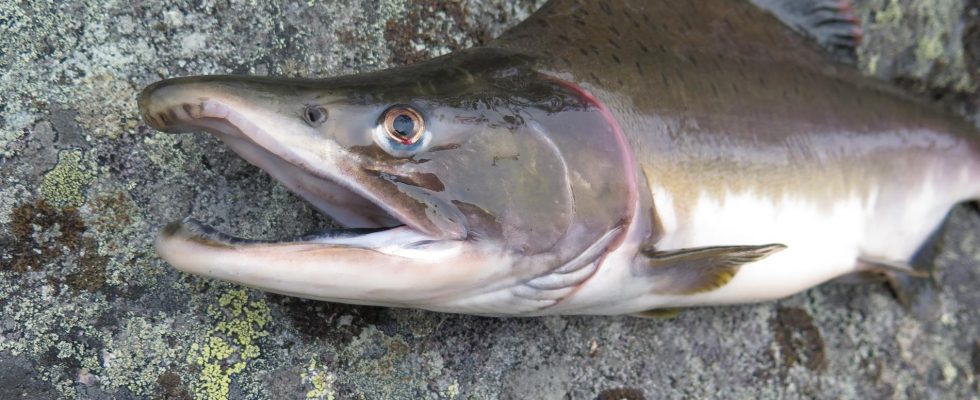1 / 5Photo: Eva Thorstad/Norwegian Institute for Natural Research
It has a black tongue, a hump on its back and defends its mating grounds to the death – the invasive Russian humpback salmon has become a huge problem in Norway and is also increasing on the Swedish west coast.
– In some rivers in Northern Norway we have between 20,000 and 30,000 humpback salmon only during July and August. Because they are so numerous compared to our other salmonids, they risk affecting the fish stock, says Eva Thorstad, researcher in marine biology at the Norwegian research institute Nina.
The authorities in the country are working hard to stop the spread and around 35 million Norwegian kroner have been invested to slow down the development, including by setting up large fish traps. Every two years it finds its way to the rivers where it spawns. The fish die shortly after the spawning period and can then lie and rot along the rivers.
An ecological experiment
– The risk is that they bring diseases and contribute to eutrophication in otherwise nutrient-poor waters. In addition, the humpback salmon can be eaten by foxes and sea eagles, which suddenly have much greater access to food. Nobody knows what the consequences will be – it’s an ecological experiment, says Eva Thorstad.
The humpback salmon, which gets its name from the hump the male develops before the mating season, originally comes from the North Pacific. In the 1950s, Russian fishermen began planting it out to fish as a food fish.
The fish with the tuber proved to thrive in new waters and have reproduced and moved down the coast. Since the 1970s it has been glimpsed in Sweden, it has been about a few.
Strong increase
– But in 2017, something happened. Suddenly there was an enormous amount more humpback salmon in Norway and we also saw significantly more in Sweden, says Tom Staveley, researcher in aquatic ecology at the Swedish University of Agriculture.
In 2021, around 70 individuals of humpback salmon were observed in Sweden. No one knows why there was such a sharp increase at that time, something made the conditions favorable. But there are theories that an increased water temperature has been beneficial.
– It has gotten warmer in the oceans in the last 20 years. Unlike Atlantic salmon, humpback salmon seem to thrive in the new climate, says Eva Thorstad.
There is still no official monitoring of the stock here, but SLU has, together with county administrative boards along the west coast, started a research project to map the stock. So far, no one knows if and how the invasive fish affects marine and freshwater ecosystems. There is concern that an alien variety could make the situation even more challenging for the current salmon stock, which is already weakened.
– We don’t want this. If you catch a humpback salmon, you must euthanize it, says Hans Schibli Lundahl at the County Administrative Board in Halland.
Captured in picture
As part of the project, Tom Staveley and other experts have been out along the west coast collecting water samples to look for humpback salmon DNA. With the help of cameras that are set up by, among other things, the river Ätran in Halland, they are caught on picture.
So far this year, there have only been about ten observations of humpback salmon in Sweden. But this year’s high water flows make uncertainty great and high water flows may have caused the cameras to miss the salmon.
Situations like the one in Norway are to be avoided at all costs. Eva Thorstad has a call to the Swedish authorities:
– Monitor it closely and follow the development of how it spreads. If it spreads further to the Baltic Sea, there could be unforeseen consequences.
FACT Humpback salmon
The humpback salmon, Oncorhynchus gorbuscha, lives naturally in, among other places, the North Pacific Ocean, the Arctic Ocean and Northeast Asia, but has also been planted in Russia, east of the Norwegian coast.
Humpback salmon live in a two-year cycle. It takes two years from spawning until the offspring return to the spawning grounds. After spawning, the fish die.
Source: SLU
Read moreFACTSHow do I recognize a humpback salmon?
The male develops a characteristic lump on his back before mating.
Black dots on the tail.
Black oral cavity.
An adult spawning humpback salmon is about 40–55 centimeters long, but can grow up to 75 centimeters with a weight of 5 kilograms.
Source: County Administrative Board in Halland
Read more
